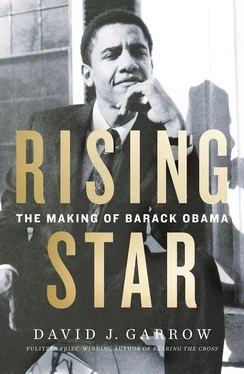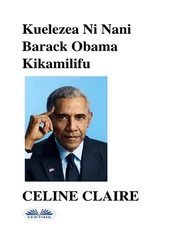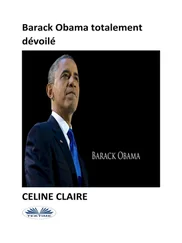In late 1983, a new organizing effort began in the Eden Green community. Madeline Talbott and Keith Kelleher, two Association of Community Organizations for Reform Now (ACORN) organizers, had met Tom Joyce while working in Detroit, and Tom’s Claretian Social Development Fund provided the initial seed money to launch ACORN in Chicago. ACORN’s Eden Green organizer was Grant Williams, who had worked for ACORN in Philadelphia and St. Louis. Williams viewed Eden Green as more promising turf than Altgeld, but after a founding meeting of South Side United Neighbors, Williams expanded his work into the Gardens. He contacted Lena and her IACT colleagues about the new-dumps moratorium, but in Altgeld, the residents’ biggest concern was the poor public bus service to the outside world. By March 1984 Williams had interested a reporter from Chicago’s premier African American newspaper, the Defender, in Altgeld’s transit plight, and a community meeting to oppose possible service cuts by the Chicago Transit Authority drew a good crowd.
By summer, Williams had signed up some eighty-three dues-paying members for ACORN—$16 a year—but by late August, he was moving to Detroit, and a brand-new University of Chicago graduate, Steuart Pittman, would take over in September. 34
Before the end of summer 1984, Jerry Kellman also made his first successful forays toward enlisting some Protestant pastors to join his previously all-Catholic CCRC. His first two recruits were Rev. Bob Klonowski of Hegewisch’s Lebanon Lutheran Church and Rev. Tom Knutson of First Lutheran Church in Harvey, a far-from-prosperous suburban town two miles southwest of Altgeld Gardens. Also joining CCRC was St. Anne Parish in suburban Hazel Crest, whose new pastor, Father Len Dubi, had known Kellman for more than a decade. The city parishes’ DCP designees first met Kellman and their CCRC colleagues from St. Victor and the other predominantly white congregations at Tom Knutson’s church in Harvey.
An early August issue of the Daily Calumet ran a prominent story heralding CCRC’s “phoenix-like return.” It quoted Kellman as saying he hoped sixty churches would join by October, and that by year’s end he wanted to have “a full range of support programs for laid off workers.” His top goal was to devise “a long-range plan for economic development,” and within a year he hoped to have “three or four full time employees.” Fred Simari and Gloria Boyda from St. Victor were appointed to a task force overseeing the new federally funded suburban job retraining program, but the program would not be able to accept applications until December or January. 35
Throughout the fall of 1984 and early 1985, IACT, Hazel Johnson’s PCR, and even ACORN appeared more visibly active than CCRC and DCP. A mid-September appearance by IEPA director Richard Carlson at St. Kevin drew an angry crowd that erupted in shouting when he insisted that the Southeast Side’s bevy of waste facilities posed no threat to anyone’s health. Marian Byrnes from Jeffery Manor, a widowed, recently retired schoolteacher who had founded the Committee to Protect the Prairie to avert construction on the undisturbed, 117-acre Van Vlissingen Prairie north of 103rd Street, forcefully told Carlson, “We will never believe you! You might as well go home!” That tussle was quickly overshadowed when the Chicago Sun-Times reported that water from at least three residential wells just south of Altgeld Gardens contained cyanide, benzene, and toluene. Most Chicago residents were no doubt surprised that anyone within the city limits had to rely upon wells for water service, but city officials had been aware of the issue for three months. Homeowners in the tiny, seven-home enclave called Maryland Manor paid city taxes but had neither paved streets nor water and sewer service. The residents were wary enough of their cloudy well water that they used it only for toilets and the like, as opposed to drinking, but the extensive press coverage was a huge embarrassment for Mayor Washington, one that would have been worse had the press known that the issue had been handed off to an intern over the summer.
In late October, just two weeks before the November general election, Lena and her colleagues successfully targeted incumbent U.S. senator Chuck Percy after he skipped a UNO candidates’ forum with Democratic challenger Paul Simon. UNO followed Percy to a black radio station, WVON, and stormed the building, causing the beleaguered senator to take refuge in a women’s restroom. Percy remained locked inside there for some hours, and the standoff made for memorable local television news footage. On November 6, Simon defeated Percy by fewer than ninety thousand votes out of more than 4.6 million that were cast. 36
When the U.S. EPA denied an IACT request to review the state’s finding of no health threat, Lena told the media the refusal was “quite ironic” in light of the Maryland Manor contamination. In mid-November, when state officials authorized the cleanup of an abandoned dump at 119th Street that contained 1,750 barrels of unknown chemical waste, Governor Thompson showed up wearing a protective suit, boots, and a mask to tell journalists that the site was “a monument to man’s greed and disregard for the health and safety of fellow citizens.” Along with Frank Lumpkin’s SOJC, UNO also continued to push city officials to open a job retraining center on the Southeast Side, but environmental issues had now replaced economic ones at the top of the local agenda. 37
ACORN’s fall 1984 efforts in Altgeld Gardens underscored that shift. Once Steuart Pittman took over from Grant Williams, the small group changed its name to Altgeld Tenants United (ATU). Williams had warned Pittman that local advisory council (LAC) president Esther Wheeler was “kind of nuts,” but when ATU sought to use the project’s community building for a neighborhood-wide meeting, Wheeler summoned “your Leader” to meet with her executive board. ATU still drew more than one hundred residents to an October 30 meeting, but Wheeler showed up to accuse Pittman of having an intimate relationship with an elderly and devout ATU leader: “That white boy is shacking up with Maggie Davis.” It was a ludicrous allegation, but Wheeler’s role in Altgeld caused untold harm to the Garden’s residents. As Pittman reported to ACORN’s Madeline Talbott, “the grocery store”—the one whose visible population of daytime rats had astonished outsiders several years earlier—“has a plaque award for community service in it from Esther Wheeler and the LAC.”
ATU reached out to both the city’s sewer department and to CHA’s Altgeld head manager, Walter Williams, who told the organization, “I’ll resign my job before giving in to tenants’ demands.” The sewer department deployed workers, who told residents Altgeld’s sewers were the worst they had ever seen and would take months to clean, but work was halted after one week by the CHA, which would have to foot the bill. In response, over a dozen ATU members picketed CHA headquarters in the downtown Loop on November 14 and then held a press conference.
The African American Defender gave them front-page coverage, and the local 9th Ward alderman, Perry Hutchinson, took an interest, telling the Defender that “Chicago has forgotten about south of 130th Street” and the people marooned there. But Pittman was disappointed that turnout at ATU meetings was declining. When he arranged a January 23 tour of WMI’s huge CID landfill east of Altgeld, only ten people showed up. Hoping to spur greater interest, he adopted Lena and IACT’s tactic from almost two years earlier, and on February 19 sixteen ATU protesters blocked garbage trucks’ entry into the landfill. Pittman, the elderly Ms. Davis, and one young man were arrested. For a second blockade on March 7, only eight people participated, and the protest resulted in three more arrests. Pittman had privately given ACORN notice four months earlier that he would be leaving as of March 15, 1985, and when he departed no one immediately replaced him. At their final meeting, ATU members wondered whether they should join Hazel Johnson’s PCR. 38
Читать дальше












